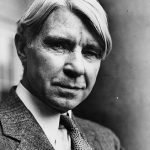The poet Allen Ginsberg went to India, when he was already a well-known figure of the Beat Generation. Flower children, the representatives of the hippie culture movement, sought to find themselves in the unexplored countries of the East. In the lands, where life was different from the bustling cities of the second half of the 20th century, to which they were accustomed to.
Indian Journals were a true revelation for their times. Being nothing like a single whole work, in fact, Journals look like a sort of rubbish dump – or the cave of Ali Baba full of treasures. Scrappy thoughts, short sketches, and images flash in front of the reader in the same way, as they were flashing in front of the author when the book was being created.
The travel notes, describing mostly not the places visited by the author, but his own feelings, Journals also include rather frivolous episodes. Drawings, notes, and poems barely have anything in common, except for the time (1962-63) and the place of creation (India). The romantic escape to “the lands unknown” is characteristic to the Beat culture, one of whose founders was Allen Ginsberg. The escape to the lands unknown, to narcotic trance, to sexual perversions.
Some critics have called Allen Ginsberg’s Indian Journals a source of knowledge about the culture and history of India for young people. This work, however, doesn’t contain encyclopedic information. Yet it was this book that became the first and the strongest stimulus for the protesting youth in Western Europe to leave off in search for happiness and alternative life. Hundreds of romantics looking for the unusual and full life and new sensations followed Allen Ginsberg to India decades after his trip.
Indian Journals are surprisingly rich in footnotes. Having returned from the trip, Allen Ginsberg tried to edit his diary entries.
However, even the author himself couldn’t always provide his own notes with clear explanation. In all likelihood, many of them were created in the state of narcotic trance. For Allen Ginsberg, drugs were an indispensable part of Indian culture.
It was narcotic unconsciousness that many young hippies were looking for in India – in the same way as Ginsberg was looking for it there.
The book is provided by detailed translator’s comments, but even they can’t make Indian Journals a single whole. Yet, the readers who are already familiar with the Allen Ginsberg’s poetry feel the specific rhythm of Indian Journals rather quickly. Indian Journals give a chance to immerse into the atmosphere in which one of the founders of the Beat culture lived. The atmosphere of lack of sense, lack of aim, the atmosphere which nourished a whole generation.
Reviewed by Katerina Sidoruk



